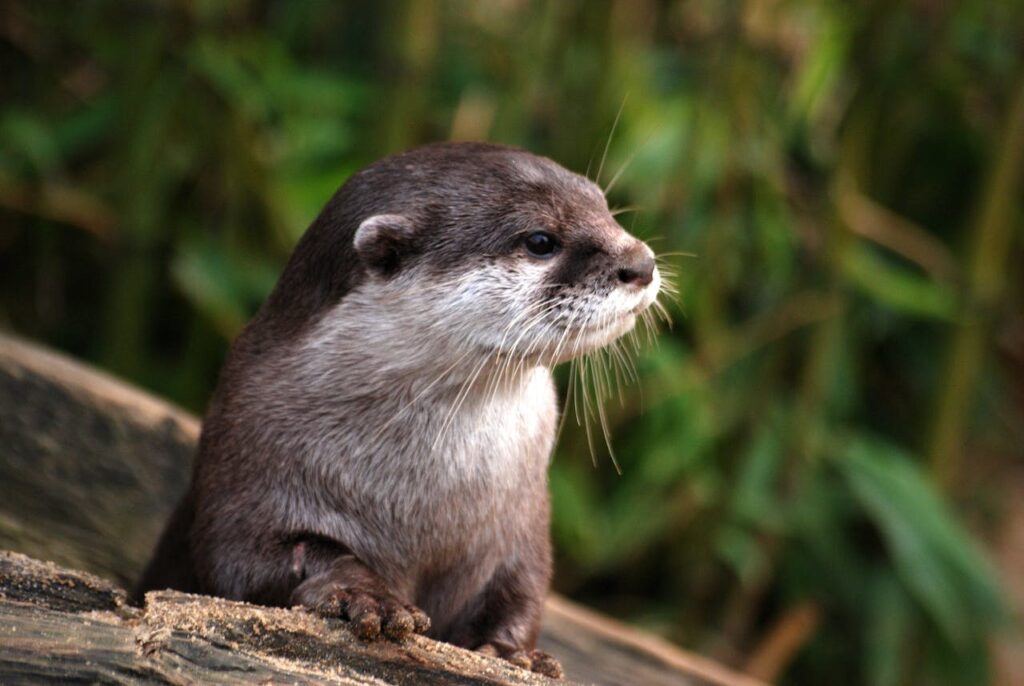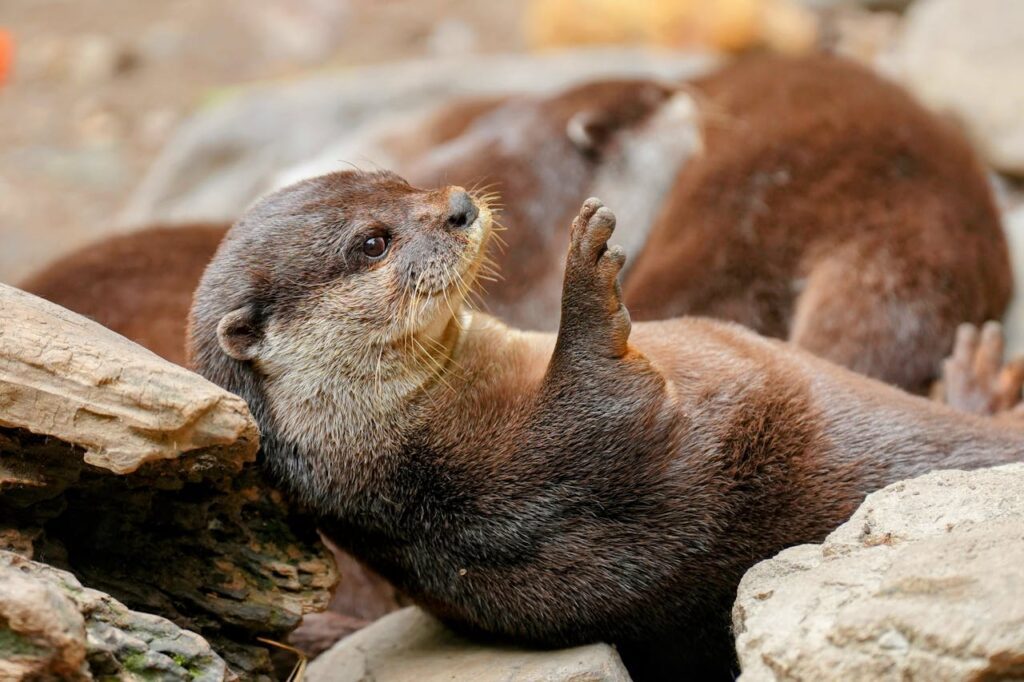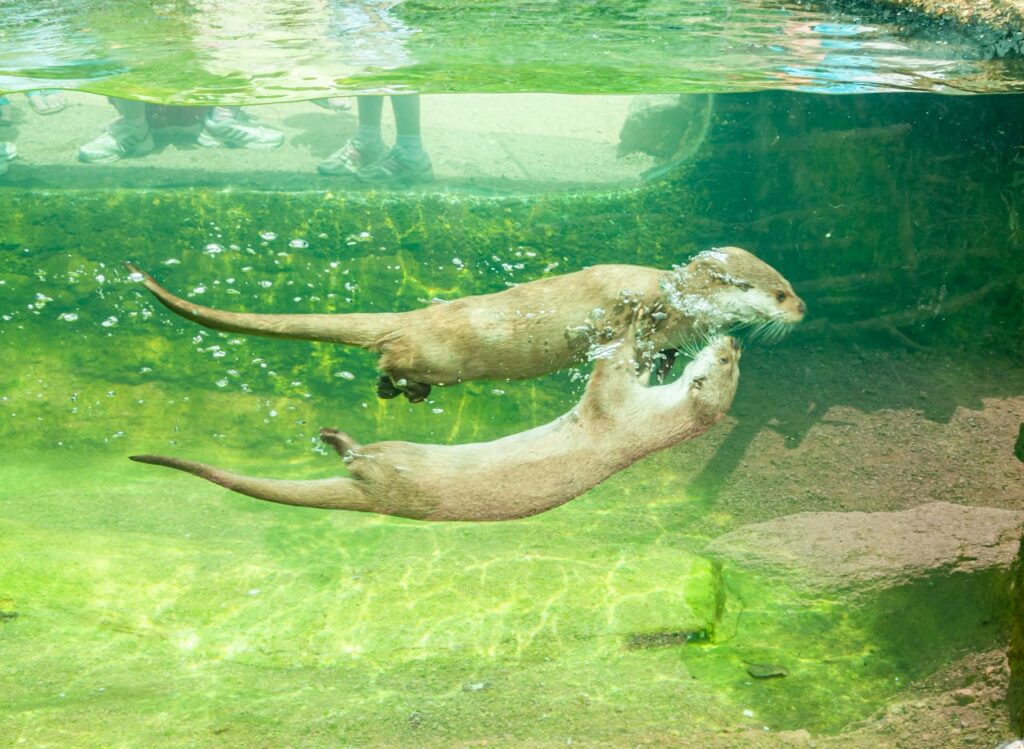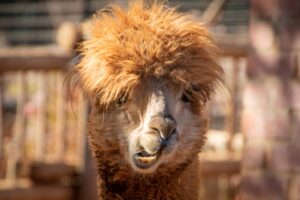20 Splashing Fun Facts About Otters
Otters, with their playful behavior and undeniable cuteness, have captivated the hearts of many. These semi-aquatic mammals are not just about whiskery smiles and belly slides; they hold fascinating secrets beneath their fur. Let’s explore 20 fun facts about otters that reveal their intriguing world.

Social Creatures: Otters are incredibly social animals, often found living in large groups called rafts. Some species, like the sea otter, can form groups of up to a hundred individuals, floating together while they eat, sleep, and groom.
A Tool-Using Marvel: Sea otters are one of the few mammal species known to use tools. They use rocks to crack open shellfish, displaying an extraordinary level of intelligence and problem-solving skills.
Unique Pocket Feature: Otters have built-in pockets under their arms. These are not for keeping their hands warm but for storing their favorite rocks and food to enjoy later.
Impressive Divers: Some otters, like the sea otter, can dive up to 330 feet in search of food. They’re also capable of holding their breath underwater for several minutes, a remarkable feat for a small mammal.
Floating Babies: Otter mothers give birth to their young in the water and will often wrap them in kelp to keep them from floating away while they hunt. This adorable “otter baby seat” showcases their nurturing side.
Distinctive Fur: Otters have the densest fur in the animal kingdom, with up to a million hairs per square inch. This thick fur keeps them warm in chilly waters, making them well-suited for aquatic life.
Territorial Markers: Otters have a unique way of marking their territory. They use their droppings, known as spraints, which have a surprisingly pleasant smell, often compared to jasmine tea or freshly cut grass.
Playful Beings: Otters are known for their playful behavior, including sliding down riverbanks. This isn’t just for fun; it’s also a practical way to travel quickly and keep their fur in good condition.
A Varied Diet: While sea otters mainly feast on shellfish, freshwater otters have a varied diet that includes fish, small mammals, and birds. Their diet reflects their adaptability and resourcefulness in different environments.
Nighttime Hunters: Many otter species are nocturnal, preferring to hunt at night. Their excellent night vision and sensitive whiskers help them locate prey in the dark waters.

Fun Facts About Otters Continued:
- Long Whiskers: Otters use their long, sensitive whiskers to detect the movements of prey in the water. These whiskers are so precise that otters can hunt successfully even in murky waters.
- Vocal Animals: Otters are quite vocal and use a variety of sounds to communicate with each other. Their calls can signify alarm, happiness, or even a call to play, showcasing a complex social structure.
- Strong Swimmers: Otters are born swimmers with webbed feet, streamlined bodies, and powerful tails, making them agile and swift in the water. Even the youngest pups can swim by two months of age.
- Global Distribution: Otters are found all over the world, from the cold Arctic waters of the sea otter to the warm, freshwater rivers and streams where river otters play.
- Endangered Status: Despite their widespread presence, many otter species are endangered due to habitat loss, pollution, and hunting for their fur. Conservation efforts are crucial to ensure their survival.
- Important Ecosystem Role: Otters play a vital role in their ecosystems by controlling the population of their prey, such as crabs and fish. This helps maintain a healthy balance in aquatic habitats.
- Indicators of a Healthy Environment: The presence of otters in a waterway is often a good indicator of a healthy environment, as they require clean, unpolluted water to thrive.
- Unique Births: Otters can delay the implantation of their embryos, allowing them to give birth at the most opportune time for their young to survive.
- Lifespan: In the wild, otters can live up to 10-15 years, depending on the species. In captivity, with proper care, they can live even longer.
- Symbol of Joy: Across various cultures, otters are seen as symbols of joy, playfulness, and family, embodying the spirit of living life to the fullest with enthusiasm and delight.

Frequently Asked Questions About Otters
What do otters eat? Otters have a varied diet that primarily consists of fish and shellfish. Depending on their habitat, they may also eat crustaceans, mollusks, and in some cases, small mammals and birds. Sea otters are particularly known for using rocks to crack open the shells of their prey.
How do otters use tools? Sea otters are famous for their use of tools. They use rocks as anvils or hammers to crack open hard-shelled prey like clams and sea urchins. This behavior demonstrates their problem-solving skills and is considered a sign of high intelligence among animals.
Are otters social animals? Yes, otters are quite social. They can be found living in groups called rafts, especially sea otters, which often float together in large numbers. River otters are somewhat more solitary but still engage in social play and hunting.
How do otters communicate? Otters communicate using a variety of vocalizations, body language, and even scent markings. Their vocal sounds can include whistles, growls, and chirps, which convey different messages such as warnings, mating calls, or playful intentions.
Do otters have natural predators? Otters face predation from several animals, depending on their habitat. Large birds of prey, such as eagles, can pose a threat to young otters. In aquatic environments, sharks and killer whales may prey on sea otters, while alligators and large fish might target river otters.
Where do otters live? Otters can be found in a wide range of environments, including freshwater rivers, lakes, and coastal marine waters. Their habitats span across multiple continents, from the cold Arctic regions inhabited by sea otters to the tropical rivers and wetlands home to various freshwater species.
How long do otters live? The lifespan of an otter varies by species and environmental factors. In the wild, otters can live anywhere from 8 to 15 years. In captivity, where they are safe from predators and receive regular care, they can live longer, up to 20 years or more for some species.
Are otters endangered? Several otter species are currently facing threats from habitat destruction, pollution, and hunting, leading to their status as endangered or vulnerable. The International Otter Survival Fund and other conservation groups are working to protect otters and their habitats.
Can otters be kept as pets? While otters may seem like adorable pets, they are wild animals with specific needs that are difficult to meet in a domestic setting. They require a large, specialized habitat, a diet of fresh fish, and lots of stimulation. In many places, it’s also illegal to keep otters as pets due to their protected status.
How do otters sleep? Sea otters have a unique way of sleeping; they float on their backs in the water, often in groups. They may use kelp to anchor themselves and prevent drifting apart. River otters usually sleep in dens along the water’s edge, which can be natural formations or burrows dug by the otters themselves.
Do otters have fur babies? Otters give birth to live young, known as pups. Sea otter mothers are particularly attentive, carrying their pups on their chests to keep them dry and warm, while river otter mothers teach their young to swim and hunt.
How do otters stay warm in cold water? Otters have incredibly dense fur, the densest of any animal, with up to a million hairs per square inch. This thick fur traps a layer of air close to their skin, providing insulation against cold water. Additionally, otters have a high metabolic rate that helps generate body heat.
Why are otters important to the ecosystem? Otters play a crucial role in their ecosystems by helping control the population of their prey, such as fish and crustaceans. This predation helps maintain a healthy balance in aquatic ecosystems. In the case of sea otters, their consumption of sea urchins helps preserve kelp forest habitats, which are vital for carbon sequestration and marine biodiversity.
Understanding otters better can foster a greater appreciation for these enchanting creatures and highlight the importance of conserving their natural habitats.













